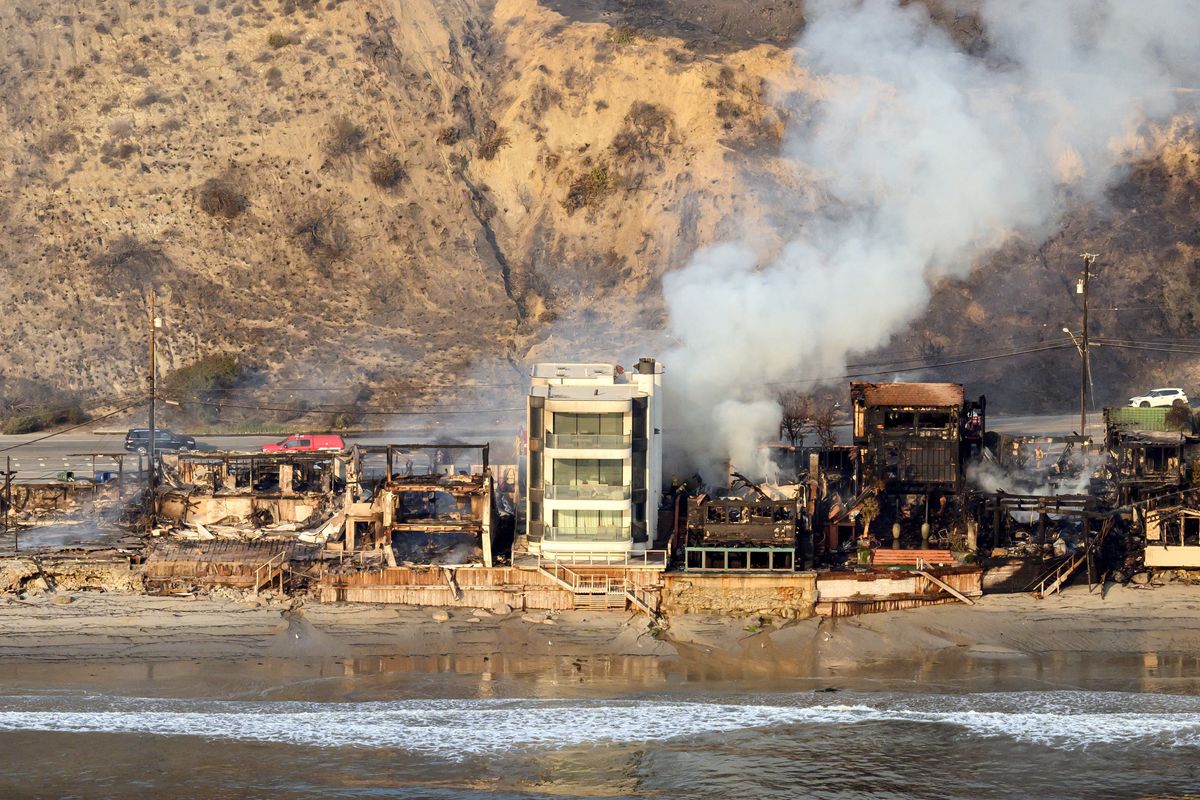has devastated much of the city over the last week.
, the Pacific Palisades area is near-flattened, 24 people are confirmed dead, and questions are being raised about what went wrong to cause such devastation.
But, there's now another detail that's piqued the public's interest: Why did some houses survive, despite being surrounded by the charred remains of others?
beachfront mansion belonging to retired waste management CEO, David Steiner.
Photos from the wreckages after the week-long blaze show the singular white building stood tall among burnt-out carcasses of mansions, and while it's been dubbed a "miracle" online, Steiner credits "great architecture, brave firefighters, and maybe a little dash of miracle" for its survival.
It's thought the home, which Steiner doesn't live in full-time and has owned since 2015, is made out of concrete, making it sturdier than many others in the area.

Concrete and brick are commonplace for building homes in places such as the UK, however, places like California are prone to earthquakes.
ICF (insulated concrete forms) are becoming more common for building there, thanks to their energy efficiency, fire resistance, and earthquake resilience, but many of the homes affected by the fires would have been constructed from materials such as wood, or stucco - a cement-based sand render.
“The survival of homes, while others around them were destroyed, can actually be attributed to a mix of careful planning, structural integrity, environmental factors, and sheer effort,” says fire safety expert Daniel Vasilevski, of Bright Force Electrical.
"The choice of materials isn’t just an aesthetic or cost decision,” he adds. "It directly impacts a structure’s ability to withstand extreme fire conditions as well.”
Other factors that could play into how well a building survives includes having double-glazed windows - which prevents shattering and doesn't allow flames to enter a property.
Sealed gaps in walls also prevent both smoke and fire from getting inside a home and allowing it to spread.
“David Steiner’s Malibu mansion includes pilings driven 50 feet into the bedrock,” explains Vasilevski.
“While these are primarily meant to provide stability during seismic activity, they make homes more resistant to wildfires as well. A deeply anchored foundation resists heat-induced shifting or cracking in the ground, which could otherwise weaken the structure and expose it to flames or embers.”
, the damage across Los Angeles now stands at around $275 billion, so the re-building operation won't be a fast one.
Here's all the ways you can help the victims of the Los Angeles wildfires.
This article was originally published on 16 January 2025.
How to join the Vivid Bulletin's free WhatsApp channel
Have your say in our news democracy. Join the conversation about this article in the Comments.


Post a Comment
0Comments